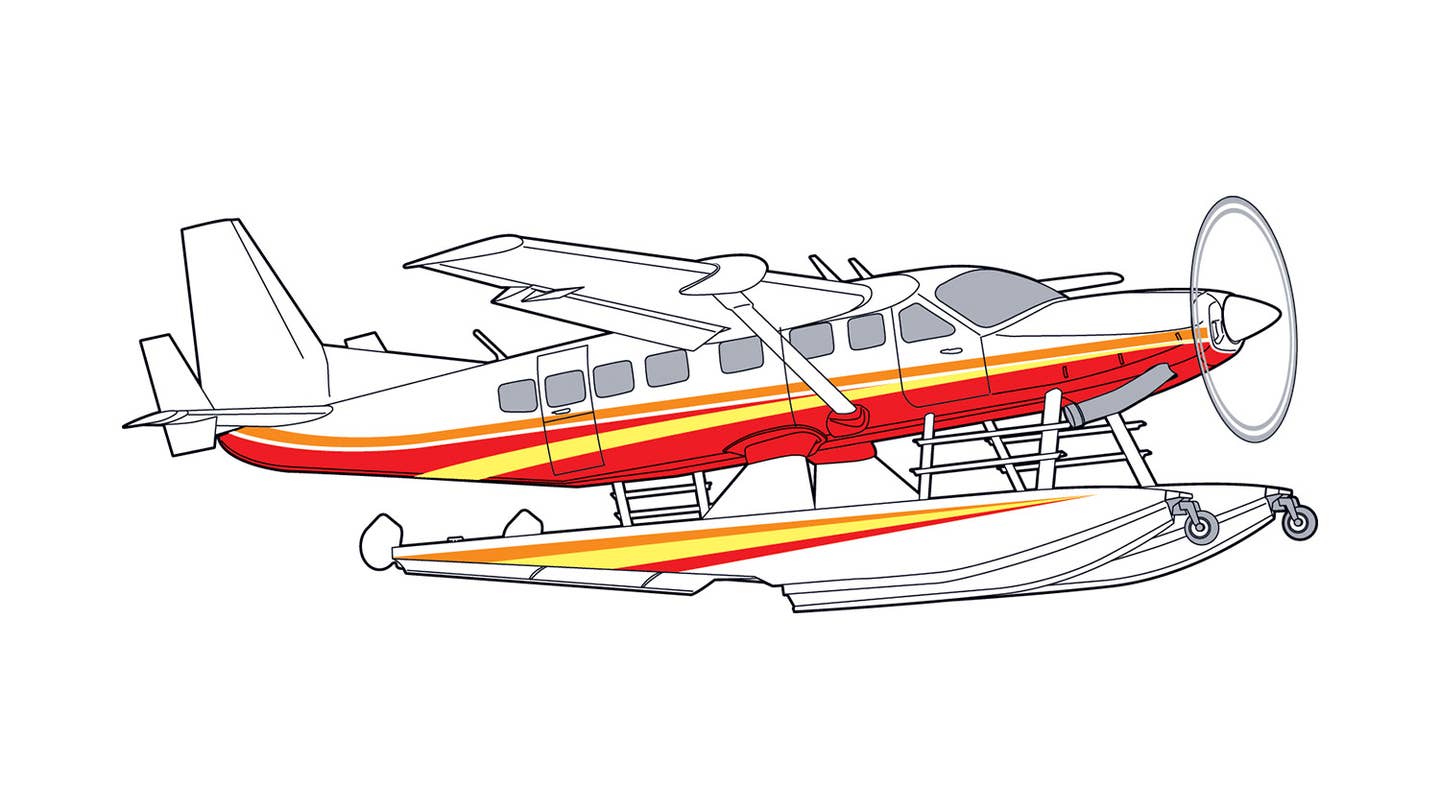
Adding floats transforms a land-based machine into a multipurpose recreational water vehicle, opening the door to thousands of small bodies of water not accessible by traditional aircraft. Flying
Floats look very much like small boats slung beneath the fuselage of an aircraft in place of the original wheels and landing-gear struts. Adding floats transforms a land-based machine into a multipurpose recreational water vehicle, opening the door to thousands of small bodies of water not accessible by traditional aircraft. Floatplanes also serve as vital lifelines to remote communities as their only source of food, water and two-way transportation.
Aircraft floats are created in two forms: amphibious, meaning they contain retractable landing gear to allow the aircraft to also use normal hard-surface runways, or “straight floats” that restrict the airplane to the water. Floats can run more than 30 feet in length and are usually found on single-engine airplanes like the Cessna 185, 206 and 208 Caravan, but are also popular with owners of Maules and Piper Cubs. One of the largest float-equipped airplanes is the 19-seat de Havilland Twin Otter, a turboprop that recently morphed into the Viking Twin Otter. Most floats include water rudders at the aft end to assist with steering. Because floatplanes don’t use brakes, the plane begins moving in the water as soon as the engine starts.
Floats are traditionally constructed of aluminum to make repairing them easier when they get dinged, often a result of poor docking techniques. Some manufacturers are also beginning to look at floats constructed of composites to improve maintainability. The interior of a float is not simply one large hollow area, but is constructed with a number of small compartments created for strength and to maintain the buoyancy required to support an airplane. The interior of a float supporting an aircraft weighing more than 2,500 pounds, for example, is required to contain at least five separate compartments.
In order to act as the water landing gear for a wheel-equipped aircraft, floats must displace enough water to offset the weight of the machine to which they’re attached. More specifically, an FAA rule demands floats create a buoyancy of 80 percent in excess of that required by each float to support the seaplane’s weight.
For a Cessna 208 Caravan at 8,750 pounds max takeoff weight, each float must support 4,375 pounds. Multiply that by 0.9 and again by two for the number of floats to reach the final 7,875 pounds of buoyancy demanded.
During preflight, pilots look for the float’s low point from which to pump out water that might have seeped in through any cracks. Water must be removed not only because of the weight, but also the potential effect on the aircraft’s center of gravity. Failure to remove the water can also sink a set of floats, taking the aircraft with it.
Another important addition to amphibious floats are the wheels necessary to allow float-equipped aircraft to use hard-surface runways. Each float typically includes one main and one steerable nosewheel. Seaplane pilots must be careful not to touch down on water with the gear down or the aircraft will quickly flip on its back. Two systems currently exist to prevent such accidents, one that’s airspeed-driven. When flying slower than a particular target speed, a cockpit indication confirms the gear position for a particular landing surface. Newer versions operate with a laser-based refraction system that identifies the landing surface as either water or land. If the gear is correctly configured, the system remains silent. If not, it loudly announces “check gear.”
Operating floatplanes in salt water demands constant post-flight washing to prevent corrosion. Converting a land aircraft to floats also often demands a new propeller too, since standard props are often tuned for maximum cruise speed. A floatplane pilot wants a climb prop that will pull maximum engine power at takeoff. Climb props and the added drag of huge floats mean floatplanes fly much slower than wheeled versions. Floats also don’t come cheap. One set of floats for a Twin Otter can run nearly $500,000.

Sign-up for newsletters & special offers!
Get the latest FLYING stories & special offers delivered directly to your inbox






